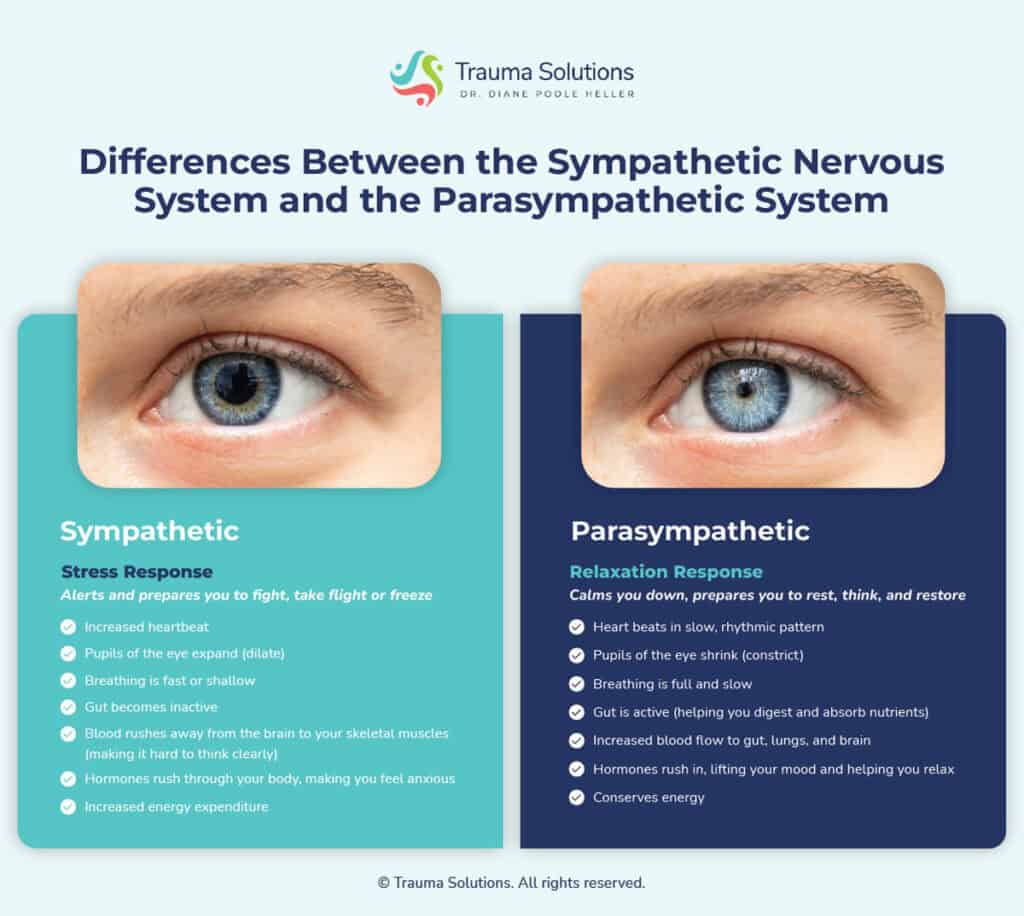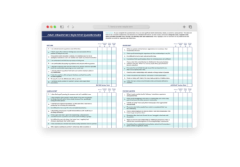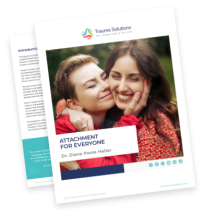We all experience stress. It’s a natural response to daily pressures and can motivate us to tackle challenges or manage change.
However, when stress persists for extended periods without relief or relaxation, it can lead to unhealthy mental, physical, and emotional tension––and impair our ability to function effectively in our daily lives. Unchecked stress activates our nervous system and can contribute to a variety of psychological and physiological issues.
In fact, the American Institute of Stress reports that 33% of people experience extreme stress and about 75% experience stress that affects their physical or mental health.
What’s more, the American Psychological Association estimates that 84% of adults experience at least one negative emotion associated with prolonged stress, including anxiety, sadness, or anger (2020).
If you’re experiencing high levels of stress or anxiety, you’re clearly not alone—and there are practices that can help reduce symptoms of stress and support you in reaching a state of relaxation.
Simple daily practices such as meditation, mindful movement, spending time with loved ones, or starting a daily journaling habit can all help to reduce our stress levels.
Share this Article:
Top Picks for You:
- The Four Attachment Styles: Secure, Avoidant, Ambivalent, and Disorganized
- Toxic Shame: What Is It & What to Do About It
- The Power of Trauma-Informed Care: Understanding What Happened to You
- Somatic Resilience: Overcoming Early Trauma (with Peter A. Levine, PhD)
- Neuroplasticity: Rewiring the Traumatized Brain
5 Techniques for Alleviating Stress and Anxiety
Practice Mindful Breathing
When we experience stress, our sympathetic nervous system turns on and signals our body to be alert and ready for danger. However, we can counteract this stress response by engaging our parasympathetic nervous system, which promotes relaxation and tells our body it is safe to rest.

One effective way to activate the parasympathetic nervous system is through mindful, deep breathing, especially focusing on longer exhales.
Try this simple breathing technique:
- Find a comfortable seated position, either on a chair or a cushion on the floor.
- Close your eyes if it feels safe, or just soften your gaze if you prefer.
- Take a slow, deep inhale through your nose for a count of four.
- Exhale slowly through your mouth for a count of six.
- As you breathe, focus on the sensation of the air moving through your nostrils, the rise and fall of your abdomen, and the expansion of your chest.
- If your mind wanders, gently bring your attention back to your breath without judgment.
- Continue for at least 10 full breaths (or longer if desired).
- After completing the exercise, take a moment to notice any changes in your body, or your mind, such as a sense of calm or relaxation.
Remember, the key is to focus on extending your exhalation slightly longer than your inhale, which helps signal to your body that it is safe to relax.
With regular practice, mindful breathing can become a powerful tool, helping you find moments of peace and tranquility wherever you are.
Progressive Muscle Relaxation
Progressive muscle relaxation is a technique that involves tensing and relaxing different muscle groups throughout the body. By actively tensing the muscles, you can increase awareness of what physical tension feels like, making it easier to recognize in your everyday life.
When you consciously relax the muscles, the body tells the brain that the threat has passed and that it’s ok to let go of stress or anxiety, promoting a sense of calm.
Here’s how to practice progressive muscle relaxation:
- Start by finding a comfortable place to sit or lie down, close your eyes, and take a few deep, grounding breaths.
- Beginning with your feet, gently tense the muscles by curling your toes and activating the soles of your feet. Hold the tension for 5-10 seconds.
- Exhale and release the tension in your feet, paying attention to the feeling of release and relaxation flowing into the muscles.
- Move onto your lower legs, tensing the muscle by pointing your toes toward your head and holding for 5-10 seconds.
- Exhale and release the tension in your calves, again focusing on the sensation of relaxation.
- Continue this process of tensing and relaxing each muscle group, moving up through your body: upper legs, hips and buttocks, stomach, chest, back, hands, arms, shoulders, neck, and face.
- After completing the sequence, take a few more deep breaths and spend a moment to notice the difference in your body.

As you practice progressive muscle relaxation, you may find you become more attuned to the physical sensations of tension and relaxation in your body, making it easier to respond when your body feels overwhelmed by stress.
This technique can be particularly helpful before bedtime, as it can promote better sleep by helping you unwind and let go of the day’s tensions.
Connect with Others
While this may seem like a simple suggestion, connecting with others can often feel difficult when we’re overwhelmed.
However, social connection and supportive relationships can provide a sense of belonging and a safe space to share your feelings and experiences. Having a strong support network can better equip you to handle life’s challenges and stressors.
Consider the following when it comes to cultivating meaningful connections and alleviating stress:
- Understand your attachment style: Our attachment style, formed in early childhood, influences how we relate to others and seek support to cope with stress. By gaining an awareness of how your attachment wounds developed, you can strengthen your secure attachment skills and begin building healthier, more supportive relationships.
- Reach out to loved ones: Even if you worry about being a burden, reach out to a non-judgmental friend, family member, or even a colleague. Sometimes, simply talking about your stressors with someone who listens can provide relief and help you gain a fresh perspective.
- Engage in social activities: Participate in activities that align with your interests and values, such as joining a club, attending community events, or volunteering. These activities connect you with like-minded individuals and can provide enjoyment, fulfillment, and purpose—great antidotes to stress.
- Seek professional support: If you find it challenging to build or maintain supportive relationships, consider working with a therapist. They can help you with additional
stress-management tools, and address issues hindering you from connecting with others.
Write it Down
Journaling is an effective method for reducing stress because it helps clarify your thoughts and process your experiences in a safe space. By putting pen to paper, you may gain insights and clarity on the challenges you face.
One particularly effective journaling technique is cognitive reframing, which involves identifying and challenging negative or distorted thoughts and beliefs.
By reframing these thoughts in a more balanced, realistic, or positive light, you can reduce their emotional weight, and create a sense of empowerment and control.
Try getting started with one (or more) of these prompts:
- Gratitude reflection: Write about three things you feel grateful for today, no matter how small. Focusing on positive emotions can help shift your mindset and reduce stress.
- Challenge negative thoughts: Identify a negative thought related to your stress, like “I can’t handle this” or “This will never get better.
Write the opposite down at the top of your page (“I can handle this,” “This situation will pass”), and then write all of the evidence to support your revised claim.
For example, “I have handled similar situations in the past,” or “I have the skills and resources to cope with this challenge.”
- Ideal outcome: Imagine the best possible outcome for your current stressful situation. What would it look like, and how would you feel? Write about the outcome in detail, engaging all of your senses in the description.
- Letter of self-compassion: Write a letter to yourself from the perspective of a supportive, compassionate friend. What would they say to you about your current struggles, and what advice would they offer?
There is no right or wrong way to journal. The most important thing is to find a format that feels comfortable and helpful for you—experiment with different techniques and prompts to discover what resonates with you the most.
By journaling regularly, you can develop a valuable tool for gaining insight, managing stress, and promoting well-being.

Move Your Body
Stress activates the body’s fight-or-flight response, preparing you to face a threat. However, when the stressful situation passes, the tension generated by this response can remain trapped in the body.
Exercise, and physical movement generally, can help alleviate anxiety by completing this natural biological stress cycle––bringing your body and mind back to a state of balance and relaxation.
The good news is you don’t need to spend hours at the gym or engage in strenuous exercise to experience these benefits. Any form of physical activity that feels enjoyable can be effective in reducing stress.
Here are a few suggestions:
- Take a leisurely walk: Go for a walk in nature, or just around your neighborhood. Focus on your surroundings, the sensation of your feet touching the ground, and the connection between you and the natural world.
Stretch your body: Try a gentle stretching routine—touch your toes, roll your shoulders, or follow a simple yoga sequence. Pay attention to the sensations in your body as you stretch and release the tension stored in your muscles.
- Dance to your favorite music: Play DJ and put on a playlist of your favorite songs. Allow your body to move freely, letting go of any self-judgment, and simply enjoy the experience of moving to the music.
- Explore something new: Experiment with low-impact exercises like swimming, cycling, or tai chi. These activities can provide a gentle workout while reducing stress levels, stabilizing mood, and promoting better sleep.
The key is to choose activities that feel good to you and that you can do consistently. Even short bursts of movement throughout the day can be beneficial in reducing stress and promoting overall well-being.

Find Your Calm
No matter who you are or what you do, events and experiences can overwhelm us and leave us susceptible to stress. Stress is a natural part of life—work, relationships, finances, health, and other circumstances can all make us feel overwhelmed.
Incorporating these five techniques––mindful breathing, progressive muscle relaxation, connecting with others, journaling and cognitive reframing, and moving your body – into your daily routine can help you manage stress more effectively to cultivate a greater sense of calm and resilience.
Remember, stress management is a highly personal journey, and what works for one person may not work for another. Be patient with yourself as you explore these techniques, and don’t hesitate to reach out for professional support if you need it.
With time and consistent practice, you can develop an stress-management toolkit that empowers you to navigate life’s challenges with greater ease and confidence.





Ready to Begin Your Healing Journey?
Browse on-demand courses and begin learning from top experts today!


